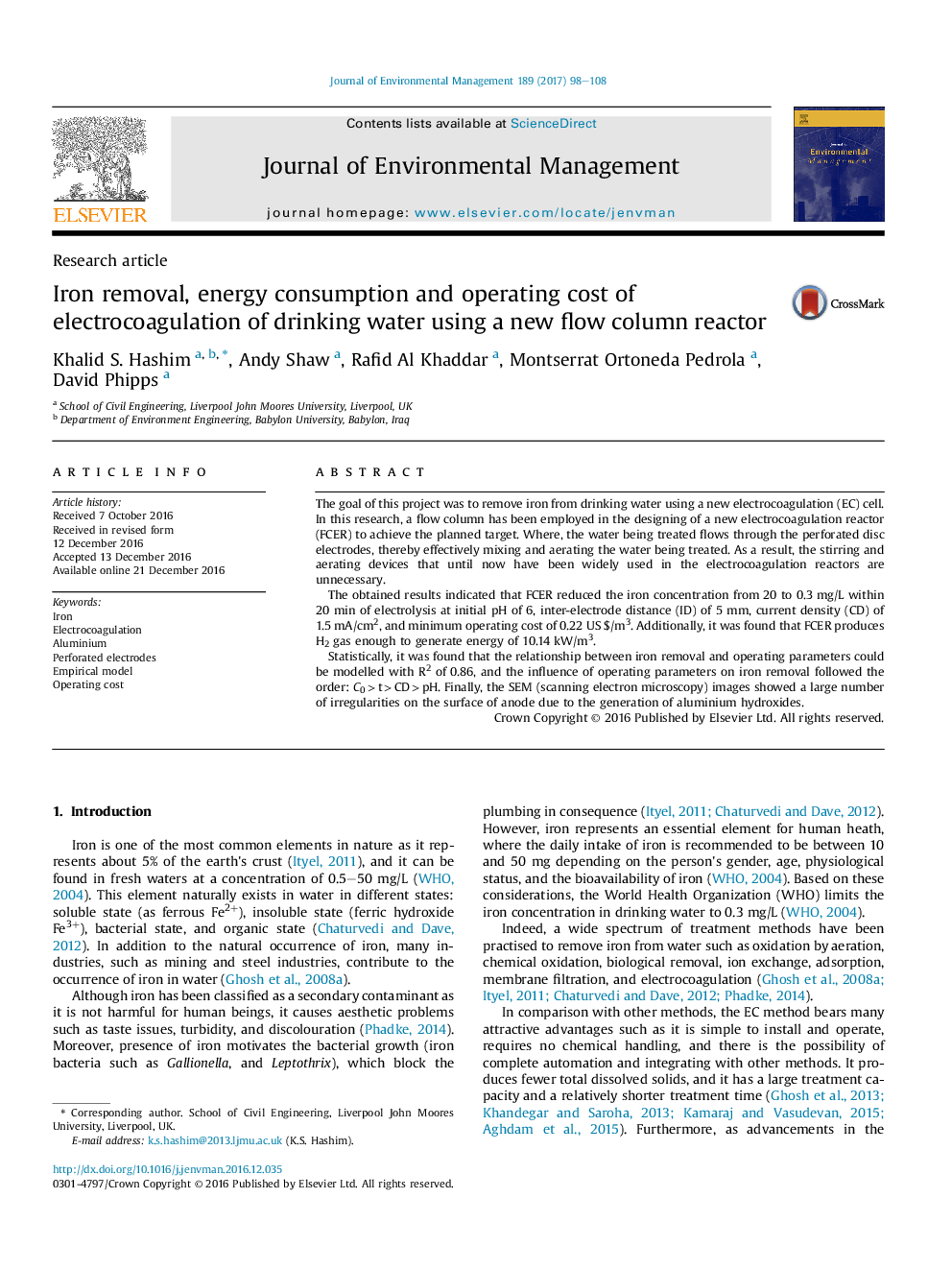| کد مقاله | کد نشریه | سال انتشار | مقاله انگلیسی | نسخه تمام متن |
|---|---|---|---|---|
| 5117067 | 1485226 | 2017 | 11 صفحه PDF | دانلود رایگان |
- The new EC reactor, FCER, removed 99.6% of 20Â mg/L of iron.
- Performance of FECR, in terms of iron removal, was modelled with R2 of 0.86.
- FECR reduced the need for external mixing and aerating devices.
- FCER emits H2 gas enough to produce energy of 10.14Â kW/m3.
- SEM images showed many dents on the anode due to the production of Al hydroxides.
The goal of this project was to remove iron from drinking water using a new electrocoagulation (EC) cell. In this research, a flow column has been employed in the designing of a new electrocoagulation reactor (FCER) to achieve the planned target. Where, the water being treated flows through the perforated disc electrodes, thereby effectively mixing and aerating the water being treated. As a result, the stirring and aerating devices that until now have been widely used in the electrocoagulation reactors are unnecessary.The obtained results indicated that FCER reduced the iron concentration from 20 to 0.3Â mg/L within 20Â min of electrolysis at initial pH of 6, inter-electrode distance (ID) of 5Â mm, current density (CD) of 1.5Â mA/cm2, and minimum operating cost of 0.22 US $/m3. Additionally, it was found that FCER produces H2 gas enough to generate energy of 10.14Â kW/m3.Statistically, it was found that the relationship between iron removal and operating parameters could be modelled with R2 of 0.86, and the influence of operating parameters on iron removal followed the order: C0>t>CD>pH. Finally, the SEM (scanning electron microscopy) images showed a large number of irregularities on the surface of anode due to the generation of aluminium hydroxides.
102
Journal: Journal of Environmental Management - Volume 189, 15 March 2017, Pages 98-108
